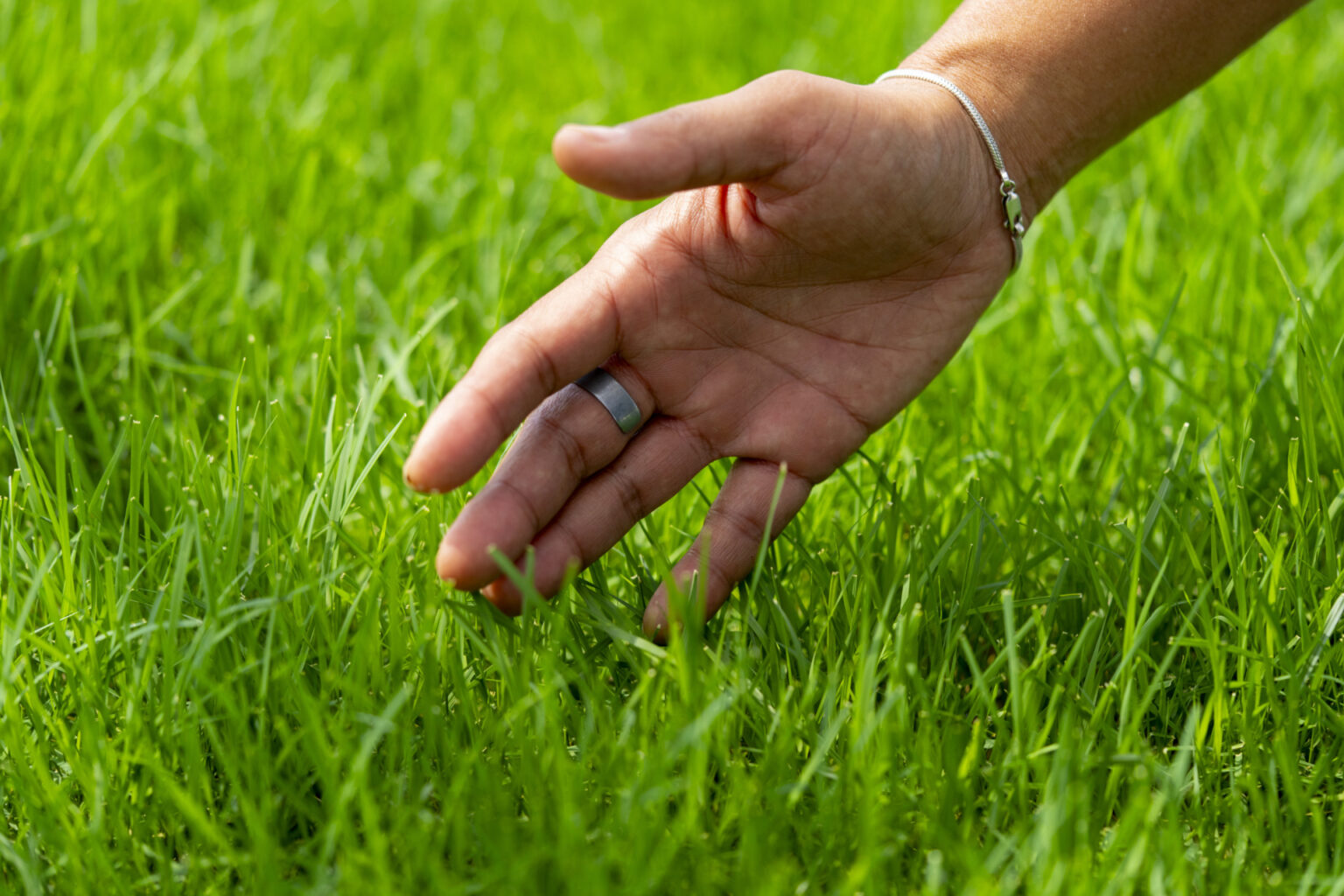How to banish and manage sandburs for good

Whether you call them grass stickers or sandburs, you know these prickly little pain dispensers are no fun. Luckily, a Texas A&M AgriLife Extension Service expert can help you win the war against them.
Sandburs are a type of weed grass with sharp, spiny seed pods that stick to most everything they touch. They can be annual or perennial, depending on where you live.
“We need to think of sandburs as weeds when we act to control them,” said Pablo Agustin Boeri, Ph.D., AgriLife Extension statewide turfgrass specialist in the Texas A&M Department of Soil and Crop Sciences, Dallas. “Usually, the main reason to remove weeds from a lawn is aesthetics, but sandburs are a health concern, especially for children and pets.”
Tip 1: Understand your location’s needs
Your location determines how to control sandburs.
Boeri warns that Texas’ wide range of climates makes it difficult to provide specific instructions. In cooler parts of the state, sandburs are a summer annual that dies back and returns from seed. In warmer regions in the south, they can live as perennials that overwinter as plants. Therefore, your control methods and timing will differ based on where the plants are in their life cycle.
Sandburs have extended germination periods that can last more than three years, Boeri said. This occurs because the spiny pods contain two types of seed with different dormancy. Additionally, seeds can survive up to eight years in the soil.
Tip 2: Consider preemergence herbicides
In northern parts of the state like where Boeri resides in Dallas, preemergence herbicides may help. However, he cautions that while this will prevent seeds from emerging, it won’t get rid of a plant that has emerged.
Timing is crucial — he explains how sandbur seeds can begin early germination at soil temperatures of 52 degrees and continue to germinate at low levels through the summer. However, peak emergence is around April-May when soils reach 72 degrees. Plants emerging at this time will produce the highest number of burs.
Apply preemergence products before peak germination and follow with another application depending on label instructions, soil type and weather. Boeri recommends using products with active ingredients like dithiopyr, indaziflam, oryzalin or pendimethalin.
“If you apply a preemergent, and you notice a few sandburs still emerge, there is a chance they may become resistant,” Boeri says. “Remove those plants by hand or mechanically, or kill them with a post-emergent herbicide.”
Tip 3: Post-emergence herbicides for sandburs
Most post-emergence herbicides available to homeowners at retail stores are not labeled for sandburs. However, products containing flazasulfuron and thiencarbazone plus iodosulfuron and dicamba are effective but intended for licensed commercial applicators. Boeri said applicators should be aware that flazasulfuron is only for use in Bermuda grass and zoysia grasses.
The most homeowner-friendly post-emergent for sandburs should include imazaquin. Products including this ingredient are available online and in home and garden departments.
“Using pre- and post-emergent herbicides can be an effective part of the plan to keep sandburs at bay,” he said.
Boeri said users should always follow product labels for all herbicides.
Tip 4: Maintain healthy and happy turfgrass

Herbicide regimens can be hit or miss as well as time- and money-consuming.
Boeri explained the best long-term strategy to win the war against sandburs is to create dense, healthy turfgrass.
Sandburs thrive in poor soil, so start with a soil test to determine what nutrients your lawn needs. Then, follow the recommendations for your soil type and grass species. Contact your local AgriLife Extension office to pick up a soil test kit with sampling and mailing instructions.
“Weeds are opportunistic,” he said. “So, we want to create conditions that promote healthy, resilient turfgrass. That is the best defense against sandburs.”
Best practices for lawn care
Two major contributors to maintaining a healthy lawn have to do with irrigation and mowing, Boeri said.
However, when it comes to irrigation, Boeri said most homeowners overdo it. Irrigating too early in the season and too often can lead to poor root development, weakened turfgrass and increased susceptibility to diseases and drought.
Boeri recommends using AgriLife Extension’s WaterMyYard app, if you are in an area it covers, to get personalized watering recommendations based on local weather. Similarly, AgriLife Extension boasts a wide variety of publications and resources available to guide homeowners regarding lawn irrigation.
Mowing your lawn at the right height and frequency helps lawn health.
Scalping the turf will create an opportunity for sandburs to germinate. Keep in mind that summer grasses like Bermuda grass and St. Augustine prefer different cuts. Catching and disposing of the clippings when sandburs are flowering helps reduce seedbanks of weeds that could develop next year. This also applies to other weeds, Boeri said.
“These practices should be performed consistently and properly to make your lawn a place where turfgrass thrives and sandburs find it difficult to emerge and multiply,” he said.
By following these tips, you can enjoy a lush, sandbur-free lawn all summer long.



